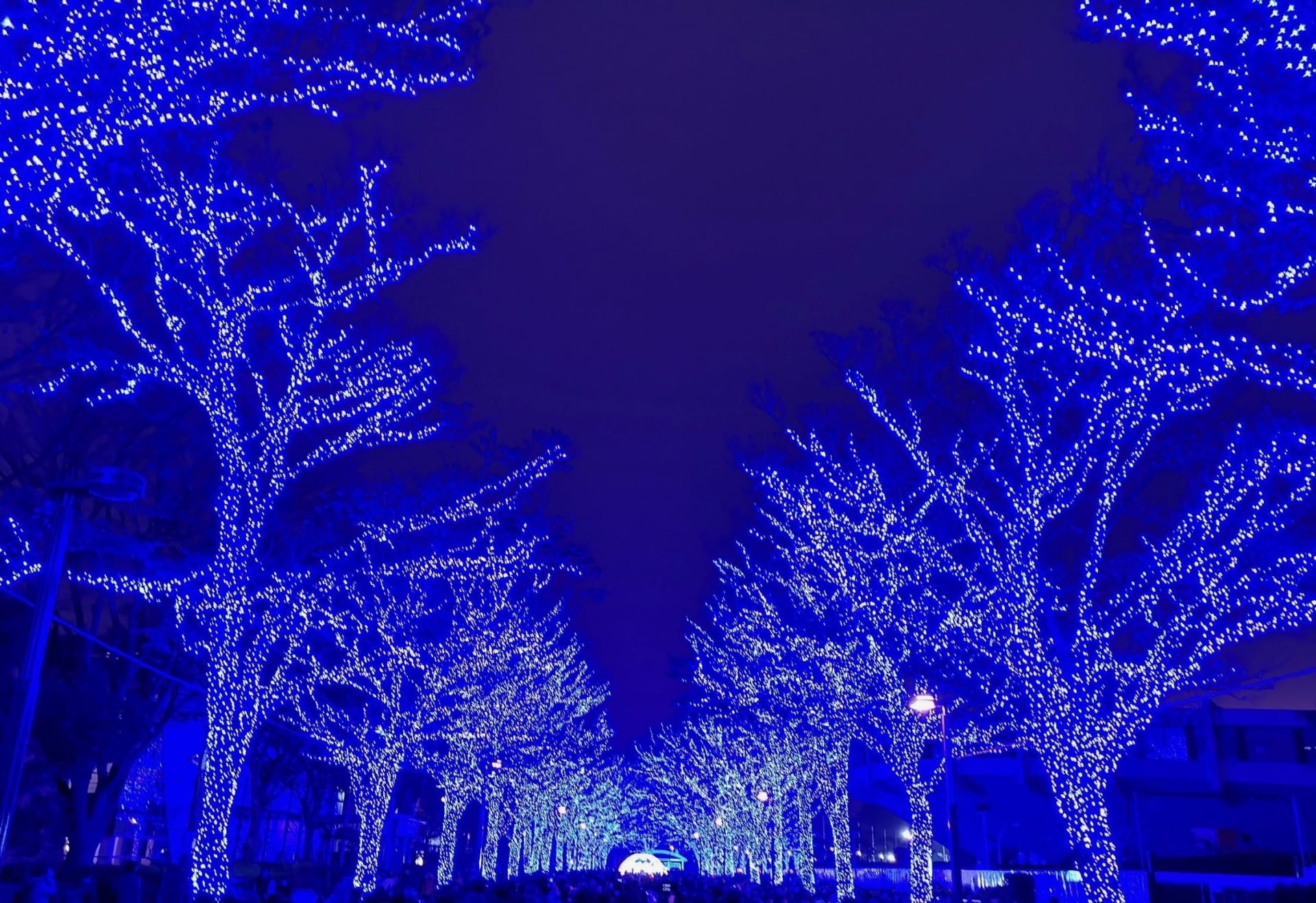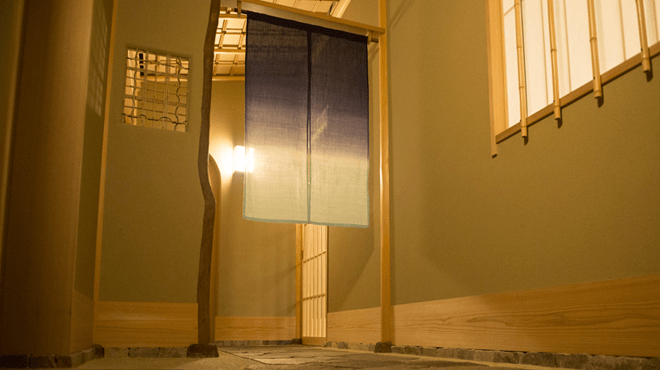Tokyo Winter: Illuminations, Traditions, and Seasonal Food
This time I wrote an article about Tokyo, a city I was born and raised. And I updated this article in January 2025 to incorporate my findings from this research, along with the latest information for 2025.
Another reason for updating the article is the growing interest in tours that allow visitors to safely and deeply experience Tokyo. Because Tokyo is a city that continues to develop at a dizzying pace and in complex ways, tourists visiting for the first time find it extremely difficult to discover the truly excellent spots beloved by locals.
This is why food tours led by knowledgeable local guides who know Tokyo inside and out have been gaining popularity, as they take visitors through Tokyo's maze of establishments.
In fact, Magical Trip's tour, which ranked #1 among all tours on Tripadvisor, has been receiving numerous applications.

If you want to experience authentic izakayas beloved by Shibuya locals, try the "Shibuya Bar Hopping Night Tour in Tokyo," which is ranked #2 on Magical Trip. A knowledgeable local guide who knows Shibuya inside and out will take you to spots where you can enjoy genuine Japanese cuisine.
And if you want to make the most of Tokyo's nightlife, you absolutely must join the "Tokyo Bar Hopping Night Tour in Shinjuku," which is rated #1 on Tripadvisor. You can safely explore Shinjuku's historic retro drinking districts and Kabukicho, the largest entertainment district in Asia, with an expert guide who knows Shinjuku thoroughly.
We hope you'll have a wonderful time experiencing everything Tokyo has to offer by joining a Magical Trip tour!
Introduction
In my 30+ years of living in Tokyo, what makes me feel the arrival of winter the most is the fantastical illuminations that spread throughout the city.
Even while shivering from the cold, I'm captivated by the breathtakingly beautiful lights and end up walking around for hours.
Tokyo's winter is a special season where glamour and tradition harmonize beautifully. While dazzling illuminations color the city, time-honored traditions breathe life into shrines and temples bustling with New Year's visitors.
And warm pot dishes and fresh seafood give us the energy to overcome the cold season.
In this article, I'll introduce you to the charms of Tokyo's winter, weaving together my own experiences and the latest information.
It's packed with information to help you fully enjoy Tokyo's winter, from illumination spots and famous places for New Year's shrine visits to seasonal tastes and advice on how to comfortably spend the winter.
Table of Contents
・Tokyo's Winter Attractions
・Tokyo's Winter Flavors
・Precautions for Enjoying Tokyo's Winter
Tokyo's Winter Attractions
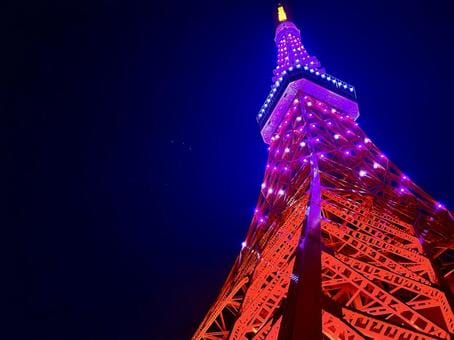
When visiting Tokyo in winter, the must-see attractions are illuminations and New Year's shrine visits. The illuminations that envelop the city in fantastical light make cold nights romantic.
On the other hand, New Year's shrine visits are a traditional Japanese New Year's custom where many people visit shrines and temples to offer prayers for the new year. These two elements further enhance the charm of Tokyo's winter.
Illumination Spots
The illuminations that color Tokyo's winter nights are truly an art of light. I'll introduce you to two spots that I especially recommend.
Marunouchi Illumination
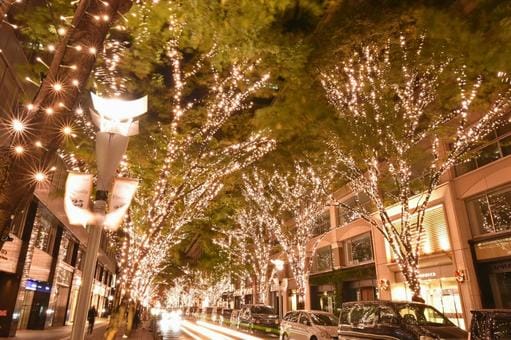
The Marunouchi Illumination is a winter tradition that I never fail to visit every year. The sight of the Tokyo Station area being enveloped in light by numerous LED bulbs is impressive.
The characteristic of this illumination, held from early November to mid-February, is the warm champagne gold color of light. The contrast with the red brick of Tokyo Station's Marunouchi Station Building is beautiful, creating a scene that looks like a painting.
Access is just a short walk from "Tokyo Station" on JR and Tokyo Metro lines.
Keyakizaka Winter Illumination
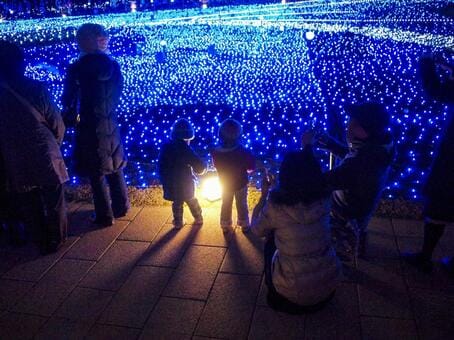
Keyakizaka Street in Roppongi Hills transforms as if by magic in winter. The zelkova trees lining the approximately 400m avenue are beautifully lit up. When I first saw this sight, I was breathtaken by its beauty.
The illumination colors are mainly based on blue and white, giving a cool and sophisticated impression. I feel this urban atmosphere harmonizes perfectly with the Roppongi cityscape.
This illumination, held from December to around February, can be said to be a symbol of Roppongi in winter.
Enjoy the sparkling tunnel of light as you slowly walk up the slope with your lover or friends. And don't forget to look back from the top of the slope. The view of Tokyo's night scenery spread out below and the zelkova trees wrapped in light will surely become a memorable experience.
Access is a 3-minute walk from Exit 1C of "Roppongi Station" on the Tokyo Metro Hibiya Line, or a 6-minute walk from Exit 3 of "Roppongi Station" on the Toei Subway Oedo Line.
New Year's Shrine Visit Spots
New Year's shrine visits are a traditional Japanese event where people visit shrines and temples to pray for happiness and health in the coming year. While there are many New Year's shrine visit spots in Tokyo, here I'll introduce two that are particularly popular.
Meiji Shrine
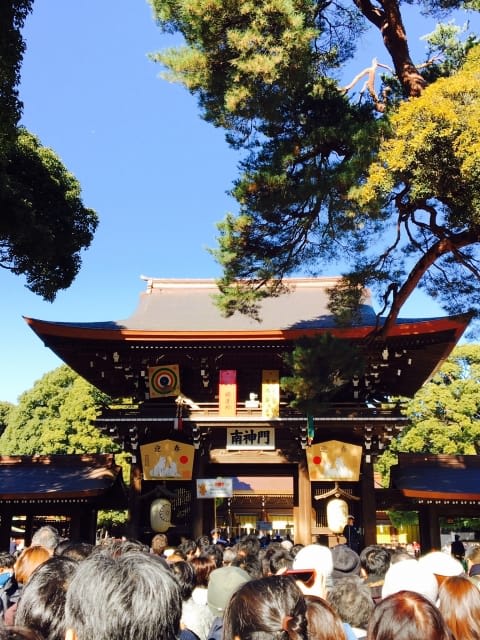
Meiji Shrine is one of Japan's largest New Year's shrine visit spots, attracting about 3 million visitors annually. I've visited for New Year's prayers many times, and each time I'm moved by the solemn atmosphere surrounded by its vast forest.
It becomes open for visits from late night on December 31st to New Year's Day, and many people come to pray with the arrival of the new year. Stalls line the approach to the shrine, selling lucky charms, allowing you to fully enjoy the New Year's atmosphere in Tokyo.
Access is a 1-3 minute walk from "Harajuku Station" on the JR Yamanote Line, or "Meiji-jingumae Station" on the Tokyo Metro Chiyoda and Fukutoshin Lines.
Website: https://www.meijijingu.or.jp/en/
Sensoji Temple
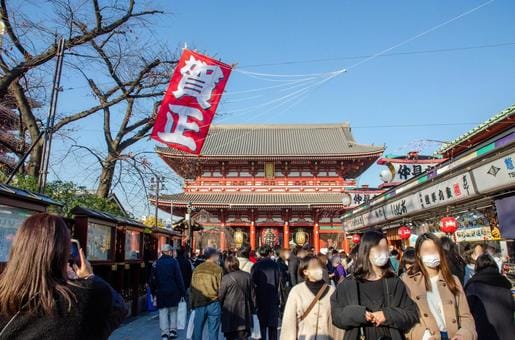
Sensoji Temple is a popular New Year's shrine visit spot where you can feel the atmosphere of Tokyo's downtown area that has continued since the Edo period.
One of the reasons I, as a Tokyo local, visit here every year is the bustle of the approach to the temple called Nakamise Street. Souvenir shops and food stalls with Edo-style charm line up along the approximately 250-meter Nakamise Street, further enhancing the New Year's visit atmosphere.
The charm of Sensoji Temple's New Year's visit lies in the New Year's Eve bell ringing. Listening to the bell rung 108 times from New Year's Eve night to New Year's Day is a very mystical experience. Also, drawing an "omikuji" fortune slip to divine your fortune for the new year after praying is one of the traditional ways to enjoy.
My recommendation is to enjoy Asakusa's specialty gourmet food after the New Year's visit. In particular, the "ningyoyaki" sold on Nakamise Street is characterized by its moderately sweet and refined taste.
Access is just a short walk from "Asakusa Station" on the Tokyo Metro Ginza Line. It's also accessible within a 5-10 minute walk from "Asakusa Station" on the Toei Subway Asakusa Line, Tobu Skytree Line, or Tsukuba Express.
Website: https://www.senso-ji.jp/
Tokyo's Winter Flavors
Tokyo's winter is a treasure trove of rich flavors. There are many ingredients and dishes that can be enjoyed especially because of the cold season, and tasting them is an essential part of experiencing Tokyo's winter.
I myself look forward to certain foods when this season comes. Here, I'll introduce some of these winter flavors.
Seasonal Ingredients
In Tokyo's winter, you can enjoy various seasonal ingredients, mainly seafood. Among them, oysters and fugu, known as the king of winter flavors, are luxurious ingredients unique to this season.
Oysters
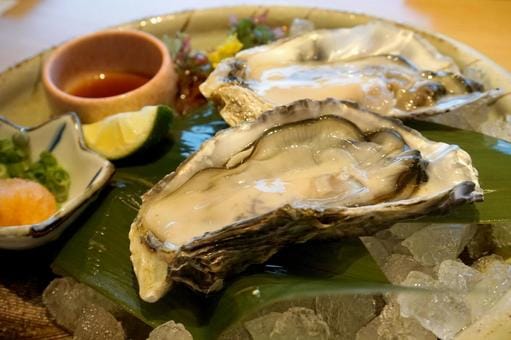
Oysters are a representative winter flavor, in season from November to March. I once went to an all-you-can-eat oyster restaurant with friends, and I remember being surprised by the richness of the taste and the abundance of flavor.
In Tokyo, you can enjoy oysters in various cooking methods such as raw, grilled, or in hot pot dishes. Especially, fresh oysters tasted at Tsukiji Market or Toyosu Market are exceptional.
However, caution is necessary for those eating raw oysters for the first time. To avoid illness, it's recommended to start with grilled or steamed oysters until you get used to them.
I myself was initially resistant to eating them raw, but gradually got used to it and now it's one of my favorite foods.
If you're enjoying oysters, try pairing them with sake. The rich taste of oysters and the clear taste of sake match perfectly, warming up a winter night.
Fugu (Pufferfish)
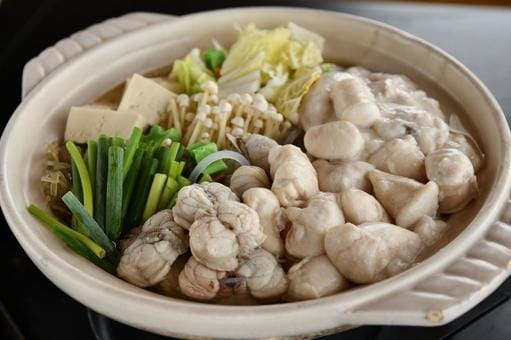
Fugu is a high-class ingredient that's said to be most delicious from December to February. Although known as a poisonous fish, when properly prepared by a chef with a special license, you can safely enjoy its supreme taste.
The first time I ate fugu was at a high-class restaurant we visited to celebrate a friend's birthday. I was a bit nervous at first, but the moment I took a bite, I was captivated by its delicate taste and unique texture.
What particularly impressed me was "tessa (sashimi)", where thinly sliced fugu meat is briefly dipped in heated kombu dashi broth before eating. The melt-in-your-mouth texture and the aroma of the kombu dashi created an exquisite harmony.
Among fugu dishes, "tecchiri (hot pot)" is especially recommended on cold winter days. It's a hot pot dish where fugu meat, skin, and fins are simmered in dashi broth, warming you to the core. Making rice porridge after the hot pot is also standard, and the porridge concentrated with fugu's umami is exceptionally delicious.
To enjoy fugu, I recommend experiencing authentic flavors at specialty shops or high-class restaurants. While the price may be a bit high, the taste and experience will surely be unforgettable.
However, when choosing a restaurant that serves fugu dishes, make sure they have chefs with officially recognized licenses. Let's savor the taste of fugu in an environment where safety is guaranteed.
Winter Staple Dishes
In Tokyo's winter, dishes that warm the body are especially popular. Among them, hot pot dishes and oden are staple menus indispensable in the cold season. These dishes not only taste good but also provide a wonderful opportunity to experience Tokyo's food culture where people gather to enjoy meals.
Hot Pot Dishes
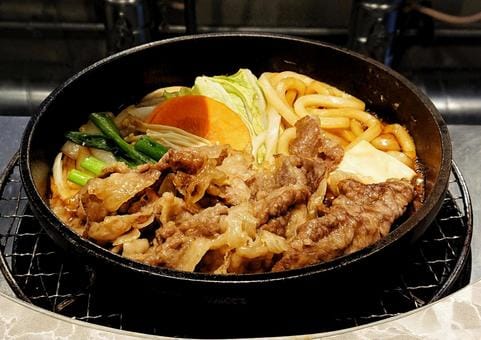
Hot pot dishes are a winter staple that warm the body in the cold season.
Spending nights gathered around a hot pot with friends is one of my winter pleasures. The time spent dividing ingredients while chatting around the table makes cold winter nights heartwarming.
In Tokyo, you can enjoy various types of hot pot dishes such as shabu-shabu, sukiyaki, and motsunabe.
Each hot pot has its characteristics. For example, shabu-shabu features a delicate taste where thinly sliced meat is lightly dipped in hot water, while sukiyaki is characterized by a rich taste simmered in sweet and savory sauce. Motsunabe, a hot pot originating from Kyushu using beef or pork offal, is popular among women for its rich collagen content.
The highlight of hot pot dishes is the finale. Eating rice porridge or udon noodles in the remaining broth is exceptionally delicious as the broth is concentrated with the umami of the ingredients.
My favorite is cheese risotto-style rice porridge. It's simple - just add rice and cheese to the remaining broth and simmer - but it's absolutely delicious.
In Tokyo, not only specialty shops but also many izakayas offer various hot pot dishes. Spending time with friends or family around a warm hot pot on a cold night is a unique way to enjoy Tokyo's winter.
Oden
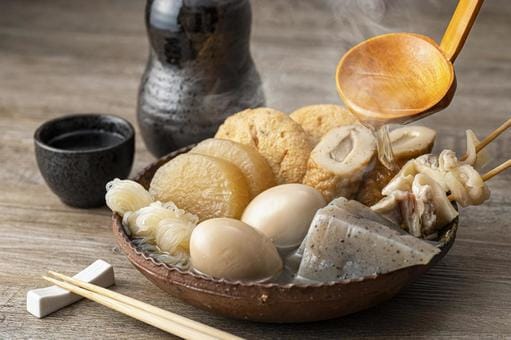
Oden is a traditional Japanese dish where ingredients like daikon radish, eggs, and konnyaku are simmered in dashi broth. It's loved by many people as a winter feature of Tokyo.
The characteristic of Tokyo's oden is its Kanto-style strong soy sauce flavor. The slowly simmered ingredients fully absorb the rich taste of the broth.
There's also a wide variety of ingredients. In addition to standard ones like daikon radish, eggs, and konnyaku, you can choose various ingredients to your liking, such as chikuwabu (a stick-shaped food made from wheat flour), deep-fried tofu, and ganmo (deep-fried tofu mixed with vegetables).
The charm of oden also lies in its convenience. Since you can easily enjoy it at convenience stores, I recommend you try it at least once when visiting Tokyo.
Precautions for Enjoying Tokyo's Winter
Tokyo's winter is full of enjoyment, from beautiful illuminations to delicious food. However, to spend it comfortably, it's important to understand the climate characteristics and make appropriate preparations.
From my own experience of spending winters in Tokyo, I'd like to share some advice.
Climate Characteristics
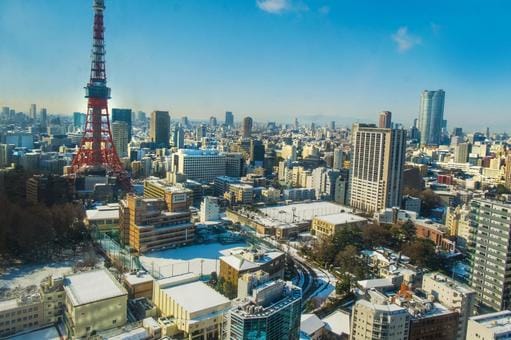
Tokyo's winter is coldest from December to February. The average temperature is around 41-50°F (5-10°C), but on windy days, the wind chill can make it feel even colder.
A characteristic point of Tokyo's winter is that there are many sunny days. It's a refreshing experience to breathe in the cold air under a clear blue sky.
However, this clear weather can also accentuate the cold. Even if it feels warm in the sunlight during the day, be careful as the temperature can drop sharply after the sun sets.
Snowfall is relatively rare, but be cautious of heavy snow that occurs once every few years. On the day I experienced heavy snow in Tokyo, the whole city was thrown into chaos. Trains stopped, roads became slippery, and we saw scenes that are usually unseen.
If there's a snow forecast during your stay, please be extra careful when going out.
Clothing Tips

To spend Tokyo's winter comfortably, choosing appropriate clothing is important. The winter clothing tip I've learned in Tokyo is all about "layering."
I recommend a down coat. It's light, warm, and wind-resistant, making it ideal for dealing with Tokyo's winter cold. Warm accessories like scarves, gloves, and hats are also essential items.
However, there's one point to be careful about. Tokyo has a big temperature difference between indoors and outdoors. Even if it's cold outside, it's often quite warm inside trains or department stores. Therefore, it's important to dress in a way that allows you to easily add or remove layers.
I used to use a thin down jacket that I bought at Uniqlo as one of my layering pieces. It's convenient because you can easily take it off and put it in your bag when it gets hot indoors.
When sightseeing, it's also important to choose comfortable and warm shoes. Tokyo's tourist spots are spread over a wide area, so comfortable shoe choice can greatly affect your fatigue level.
Tokyo's winter is a special season where glamour and tradition harmonize beautifully.
While twinkling illuminations color the city, you can experience Tokyo's good old traditions at shrines and temples bustling with New Year's visitors. And warm hot pot dishes and fresh seafood give us the energy to overcome the cold season.
Using the places and experiences introduced in this article as a reference, please create your own Tokyo winter memories!
